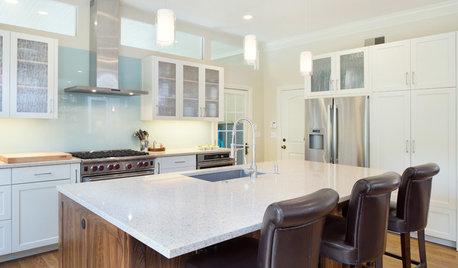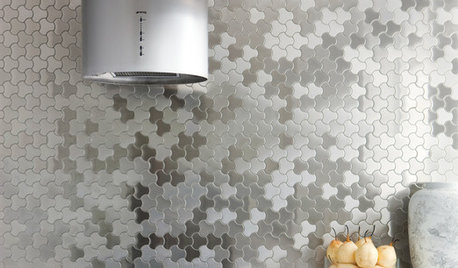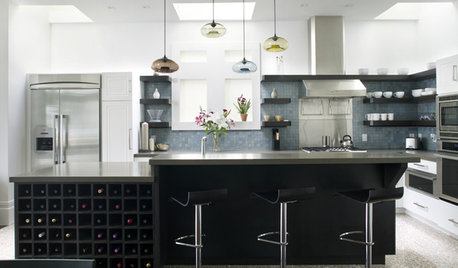What should be the minimum CFM for a Wall Range Hood
skuba
10 years ago
Related Stories

5 Stunning Modern Range Hoods
Today's kitchen range hoods can look like sleek sculptures. Here's what to look for when you go shopping for one
Full Story
KITCHEN APPLIANCESWhat to Consider When Adding a Range Hood
Get to know the types, styles and why you may want to skip a hood altogether
Full Story
KITCHEN DESIGNWhat to Know When Choosing a Range Hood
Find out the types of kitchen range hoods available and the options for customized units
Full Story
KITCHEN DESIGNHow to Choose the Right Hood Fan for Your Kitchen
Keep your kitchen clean and your home's air fresh by understanding all the options for ventilating via a hood fan
Full Story
KITCHEN DESIGNHow to Find the Right Range for Your Kitchen
Range style is mostly a matter of personal taste. This full course of possibilities can help you find the right appliance to match yours
Full Story
KITCHEN DESIGNModern Storage and Sunshine Scare Away the Monster in a Kansas Kitchen
New windows and all-white cabinetry lighten a kitchen that was once dominated by an oversize range hood and inefficient cabinets
Full Story
KITCHEN APPLIANCESThe Many Ways to Get Creative With Kitchen Hoods
Distinctive hood designs — in reclaimed barn wood, zinc, copper and more — are transforming the look of kitchens
Full Story
KITCHEN DESIGNA Cook’s 6 Tips for Buying Kitchen Appliances
An avid home chef answers tricky questions about choosing the right oven, stovetop, vent hood and more
Full Story
DECORATING GUIDESBling Where It’s Least Expected
Give your interior some sparkle and shine with metal tiles on a backsplash, shower or floor
Full StoryMore Discussions








skubaOriginal Author
Nunyabiz1
Related Professionals
North Versailles Kitchen & Bathroom Designers · Woodlawn Kitchen & Bathroom Designers · Adelphi Kitchen & Bathroom Remodelers · North Druid Hills Kitchen & Bathroom Remodelers · Avondale Kitchen & Bathroom Remodelers · Beverly Hills Kitchen & Bathroom Remodelers · Fairland Kitchen & Bathroom Remodelers · Mooresville Kitchen & Bathroom Remodelers · Pasadena Kitchen & Bathroom Remodelers · Saint Helens Kitchen & Bathroom Remodelers · Skokie Kitchen & Bathroom Remodelers · Allentown Cabinets & Cabinetry · Christiansburg Cabinets & Cabinetry · Homer Glen Cabinets & Cabinetry · Jefferson Valley-Yorktown Cabinets & CabinetryskubaOriginal Author
kaseki
attofarad
julieste
kaseki
julieste
kaseki
BBQ-Chef